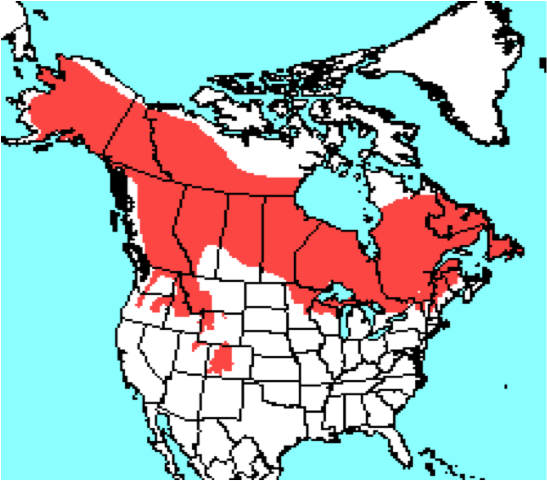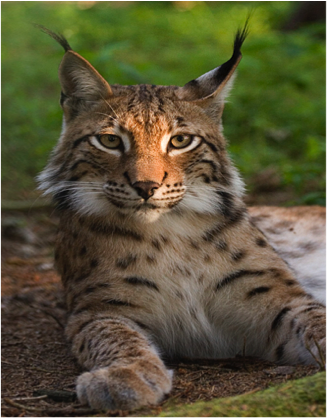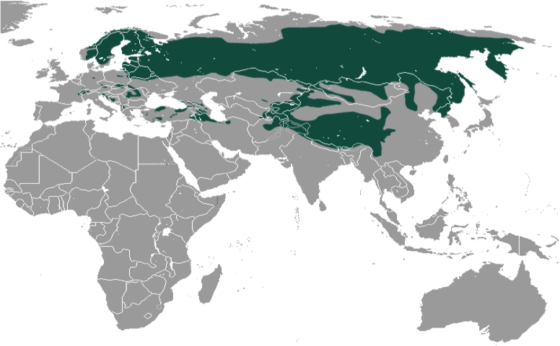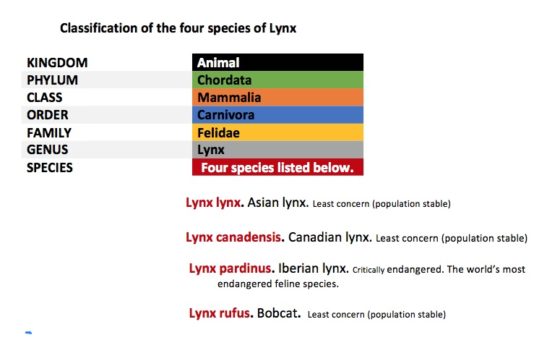If you would like to explore some of the topics further, here is a list of suggested websites. I have grouped the websites related to endangered animals near the end of the list along with a discussion of two (out of four) species the Lynx. Enjoy! — Ann M. Mayer, author of Endangered Animals of Nepal – Poems. (http://www.a-teamforwildlife.org/e-book)
**********
On the following website you can see examples of buildings designed and built by Prabel Thapa Architects, the firm which is designing the Kopila Valley School for the Blink Now Foundation. http://www.prabalthapaarchitects.com.np
**********
Here is another link to the Nepal Orphans Home, where you can see a video of some of the children singing. http://www.nepalorphanshome.org/#sthash.0OktgxiW.dpb
**********
For an informational presentation about all the Cornell Nepal Study Programs please see the following YouTube links: All Cornell programs in Nepal combined:
**********
Austin Lord, one of the men who helped bring my books from Kathmandu to Dartmouth (USA) is a photographer. He has some marvelous photographs and a slide show of Nepal sites and people on his website. http://www.austinlord.com/Nepal-Recent-Work/
**********
Nepal is a small country located between India and China. It has a troubled history due to its tiny size (about as big as NY State) and its geography which makes it subject to earthquakes. On the website below, you will find a map, statistics, facts, and articles about its history as well as current events. Nepal had a colorful, uniquely-shaped flag. http://www.infoplease.com/country/nepal.html
**********
Nepal depends on tourism. It is the starting place for climbing Mount Everest, the highest mountain in the world. It is also a popular place for trekking expeditions.

*********
Nepal has declared 14% of its total area as National Parks and Wildlife Reserves.
One of Nepal’s most famous National Parks is Chitwan National Park in the southern part of the country near India. This is a favorite destination for natural history expeditions. Visitors, if they are lucky, may see endangered animals such as the gharial, the one-horned rhinoceros, and the Royal Bengal tiger. http://www.chitwannationalpark.gov.np/
Chitwan National Park has been designated as a UNESCO World Heritage sight. http://whc.unesco.org/en/list/
**********
Photos of an Everest expedition, people and scenery. http://www.traverseline.co.uk/home/countries/nepal/classic%20treks/everest%20base%20camp/gallery/
**********
This website has free photos and other images for downloading. Use the key word “Nepal” for some excellent photos of people, landscapes, and events. http://www.pixabay.com
**********
Check out the website below for some remarkable YouTube videos of the red panda in its natural habitat.
The International Union for Conservation of Nature (IUCN) is the oldest and largest global environmental organization. Founded in 1948, it has almost 1,300 member nations and non-governmental organizations (NGOs). IUCN’s website has video clips describing the projects it supports, and interviews with experts in the field. The organization monitors WORLD HERITAGE SITES which are “the Crown Jewels of conservation.” The following video explains the history and current work of the organization. https://m.youtube.com/watch?v=0uf5e9vsXWo
The following is a website which lists the conservation status of all the animals and plants which have been evaluated. Many have not been studied. The list is constantly changing as new species are recognized as endangered and others are removed from the list. Also, new species of plants and animals are still being discovered. https://m.youtube.com/watch?v=w7GQZsGmW5Y
**********
PhotoArk
Joel Sartore is a photographer with National Geographic Magazine. He started a project to photograph every endangered or at risk animal, hoping to bring these animals to people’s attention and motivate everyone to care more about them. So far he has photographed more than 5,000 species.The following search page list many news articles and sources of information about Joel Sartore’s project. https://www.google.com/search?q=news.national-science-photo-ark-joel- sartore/&ie=UTF-8&oe=UTF-8&hl=en-us&client=safari
Also see:
http://www.joelsartore.com/galleries/the-photo-ark/
**********
Researching an Animal Species, the Lynx
Just as there are links between people in my narrative about my book publication, there are also links between animals of different species, and between animals and people.
When researching an animal, there are many websites to consult, but you must be aware of which ones have reliable and up-to-date information. Listed below are a few of the websites I consulted to find out about the endangered animals of Nepal. Most of those animals were unfamiliar to me.
I decided to pick an animal that lives in the northeastern U.S. to research using some of these websites.
Why did I choose the lynx? I am very fond of cats. I had observed that my brown and grey striped tabby cat had little tufts of black hair at the tips of her ears. As I was looking at pictures of the world’s cats, I saw that the lynx had black tufts on their ears. I concluded that my cat probably had some lynx ancestors.
Here are some of the websites I found helpful.
Arkive
Arkive is a non-profit organization which is attempting to make a film and photographic record of life on earth. They have produced many useful materials such as fact sheets and videos about individual species which are available on-line. Teachers may find the lesson plans and activities for each grade level a useful supplement to the curriculum. http://www.arkive.org
*********
African Wildlife Alliance
In 1961, African Wildlife Leadership Foundation, Inc., later African Wildlife Foundation (AWF), was established to focus on Africa’s unique conservation needs. This chronology highlights important steps in AWF’s growth and success for the past 50 years.
The AWF works to protect Africa’s endangered species, including humans, and it trains park rangers to look out for illegal trappers and hunters. It works with the local people teaching them how to live side-by-side with the local animals,without destroying valuable resources.
In addition, it sponsors wildlife tours and is building a primary school using sustainable materials. https://www.awf.org
**********
Wildlife Alliance
In 2016 the World Wildlife Fund and the Wildlife Alliance agreed to work together to support Cambodia’s new Tiger Action law to reintroduce tigers to the forests of Cambodia. The Wildlife Alliance sponsors tours in Cambodia to visit Phnom Tamao Wildlife Center. Tourists can go on patrol in the Cardamom Mountains with rangers on an ecological tour of the new Chi Phat community-based ecotourism site. https://www.wildlifealliance.org
**********
Wildlife Conservation Society
Headquartered in Bronx, New York, the WCS was founded in1895 as The New York Zoological Society. It was one of the first conservation organizations in the U.S.
Its purpose was to promote the study of zoology and build up a first- class zoo.
Today, its success is demonstrated by 5 zoos in the New York City area:
1. Bronx Zoo
2. Central Park Zoo
3. Queens Zoo
4. Prospect Park Zoo
5. New York Aquarium
The mission of the WCS is “to save wildlife and wild places.”
Their website describes the programs at each zoo: outreach, field trips, professional development, and education. https://www.wcs.org
**********
Nature Conservancy
I found this website hard to navigate. Once you find the animal you are looking for, the photos and descriptions are very precise. https://www.nature.org
This link takes you directly to the Canadian lynx. http://www.nature.org/newsfeatures/specialfeatures/animals/mammals/lynx.xml?src=share.nature.addthis.mailto#.Vs9V_g8G9HE.mailto
**********
Forestry Nepal
The gateway to forest information in Nepal. It contains a list of Nepal’s protected wildlife species. http://www.forestrynepal.org/wiki/332
**********
Earth’s Endangered Creatures
This website contains a worldwide list of endangered creature. It also has videos about some of them. http://www.earthsendangered.com/index.asp?notfound=1&nfbp=
**************************************************************************************************************
The Lynx
There are four different species of lynx which scientists have classified as belonging to the genus LYNX.
- The North American lynx (also known as the Canadian Lynx). Lynx canadensis, is found in Canada and Alaska.
- The Iberian Lynx (also known as the European lynx), Lynx pardinus, is found in Spain and Portugal. The IUCN lists it as “Critically endangered.”
- The Asian lynx (often referred to as the Eurasian Lynx), Lynx lynx, is found in Turkestan and central Asia. The IUCN lists the Asian Lynx as “Least concern.”
- The solitary bobcat, Lynx rufus, is the most common cat in North America. It is a smaller cousin of the lynx. The IUCN lists the bobcat as “Least concern.”
The primary characteristic of a lynx is the presence of tufts at the tip of the ears. Lynx are frequently confused with bobcats, which also have tufts on their ears and belong to the same genus.
The word “lynx” is derived from a Greek word meaning “to shine” – presumably referring to its reflective eyes. But perhaps the most distinctive features of the lynx are its tufted ears and cheeks and a short tail, only 1.5-3 inches long. Sometimes confused with its smaller cousin, the bobcat, the lynx may be distinguished by the tip of its tail, which is entirely black. Its spotted pattern varies, fluctuating between pronounced and muted throughout its European and Asian range.
Once common in Europe, the lynx was widely extirpated over much of the range, then reintroduced beginning in the 1970s. The largest European populations are now in north Europe and the Balkans, with the largest worldwide population found in southern Siberia. Little is known of the lynx in its wide central Asian range.
The IUCN lists the species as Near Threatened, estimating the global population to be less than 50,000 breeding individuals. Like many predators, its decline is linked to loss of habitat and prey.
. Canada lynx (Lynx canadensis)

Canada lynx are short-tailed, long-legged wildcats. They weigh 15-35 pounds and stand about 2 feet tall (about the same height as a Golden Retriever).
Lynx are usually solitary animals except for mating season in February and March. Pregnancy lasts 8 to 10 weeks. Two or three kittens are a typical litter. A newborn kitten is born helpless but with lots of fur to keep it warm. It weighs only 200 grams at birth – about the size of a bar of soap! The mother will nurse her young for about 5 months. They may begin to eat some meat at one month of age.
The mother will teach them to hunt and they will stay with her for 11 months. After leaving their mother the siblings will sometimes stay together for a while. Females can reach sexual maturity at 21 moths and males at 33 months. A female will only have one litter a year. In the wild the average lifespan of a lynx is 10 to 15 years. In captivity they can live up to 26 years. Lynx have great eyesight and can see a mouse from 250 feet away!
Several lynx sightings have been reported in northern Wisconsin . Biologists are uncertain as to whether or not lynx are breeding in Wisconsin . The main source of prey for lynx is snowshoe hare. On average, a lynx kills one snowshoe hare every other night (which means they eat 150-200 snowshoe hares per year)! If snowshoe hare are hard to find, lynx will also eat rodents, birds, fish, and weak or sick deer. (Source: The Wildwood Zoo, Marshfield, Wisconsin).
Canada lynx (Lynx canadensis)
Range Map

Eurasian lynx. (Lynx lynx)

The Eurasian Lynx Lynx lynx is the largest lynx species, and has one of the widest ranges of any wild cat.
Their fur has a usual ground colour of a yellowish-grey to greyish-brown, with white underparts. The soft, thick pelage is thickest on the back, and can be variably marked with more or less distinct dark spots, and sometimes small stripes. Northern animals tend to be greyer and less spotted than southern animals. In Scandinavia, spotted cats are called “cat lynx,” while unspotted ones are called “wolf lynx.” Summer coats usually have dark spots that fade to barely visible in the winter.
There is a distinct ruff of long hairs framing the face. The ears are large and pointed, and tipped with 4-5 cm erect tufts of dark hair. The backsides of the ears are black towards the tips, and show light central spots. Irises are a yellowish-brown to greenish, and the pupils are round. Their legs are long, with rear limbs longer than the front ones, giving body a tilted forward look. The footpads are broad and well furred for walking on snow, and the short tail is black-tipped.
This lynx occurs from western Europe through the boreal forest of Russia to central Asia and the Tibetan Plateau. They are found throughout the northern steppes of the Himalayas to an elevation of 2,500 metres.
The Eurasian Lynx is found in deciduous and mixed forests in Europe and Russia; open wooded regions and semi deserts in Central Asia; thick scrub and barren rocky areas on the northern slopes of the Himalayas and even up the Arctic tundra in northern latitudes.
Ecology
As the largest lynx species, Eurasian Lynx prey on wild ungulates but will eat smaller animals when deer are scarce. Unlike the Canada Lynx( Lynx canadensis), and Iberian Lynx (Lynx pardinus),this cat does not rely on hares, and thus is not dependent on fluctuating rabbit populations. They have been seen to cache carcasses in trees, especially in areas where there are other carnivore competitors.
Although they may hunt during the day when food is scarce, the Eurasian lynx is mainly nocturnal or crepuscular, and spends the day sleeping in dense thickets or other places of concealment. Like all lynx species, Eurasian Lynx are solitary except for mothers with kittens.
Conservation
The increasing urbanization of western Europe, and the resulting loss of habitat and diminished prey base, have led to a severe reduction of the Eurasian Lynx population there.
Escalating deforestation, persecution as stock killers, and illegal poaching remain major threats to their future. They are heavily trapped for the fur trade across their range, and legally hunted in Sweden, Norway, Finland, Estonia and Latvia.
Reintroduction programs have taken place in Switzerland, Slovenia, the Czech Republic, Austria, Germany, Italy and France. Studies have shown that Eurasian Lynx are quick to rebound if hunting pressures are lessened, and protected areas with good prey bases are set aside. (Source: wildcatconservation.org).
Eurasian lynx (Lynx lynx)
Range Map

Additional useful websites relating to the Lynx.
http://ci.marshfield.wi.us/visitors/wildwood_zoo/canadalynx.php
http://animals.nationalgeographic.com/animals/mammals/lynx/#close
http://www.wildcatconservation.org. International Society for Endangered Cats
http://www.wildcatconservation.org/wild-cats/asia/
http://www.kerenvis.nic.in/Database/CriticallyEndangeredAnimal_1094.aspx
If you Google “range maps for the Lynx” you will find a variety of maps and images for different species of Lynx.

**********
I would enjoy hearing from anyone who has ideas of other places in Nepal to donate my books or knows of other educational needs in Nepal.
You can contact me via the Bioscience Resource Project: use the “contact us” form here: CONTACT ANN MAYER and put “For Ann Mayer” in the Comment Box, before writing your comment. Thank you! I would love to hear from you.
I would like to thank the following people.
- Allison Wilson for putting up the LYNX Project web pages and the Bioscience Resource Project for hosting this project on their website.
- Diane and John Wiessinger for their logo design.
- Jagadish Bajracharya for assistance in writing “Lynx” in Nepali.
- Friends for asking me to write about my experience.
- Mount Holyoke Alumnae Website Class of 1960.
NOTE: Ann Mayer is fully responsible this Project and the content of this webpage. Any expressed opinions or endorsements are hers alone, and not necessarily those of the Bioscience Resource Project.
